The Lafayette Escadrille Memorial Cemetery is located in Marnes-la-Coquette, in the Domaine de Saint-Cloud, halfway between Paris and Versailles, France. In January 2017, the American Battle Monuments Commission officially assumed ownership and responsibility. Hidden in a French national park, the monument may not be what you think it is.
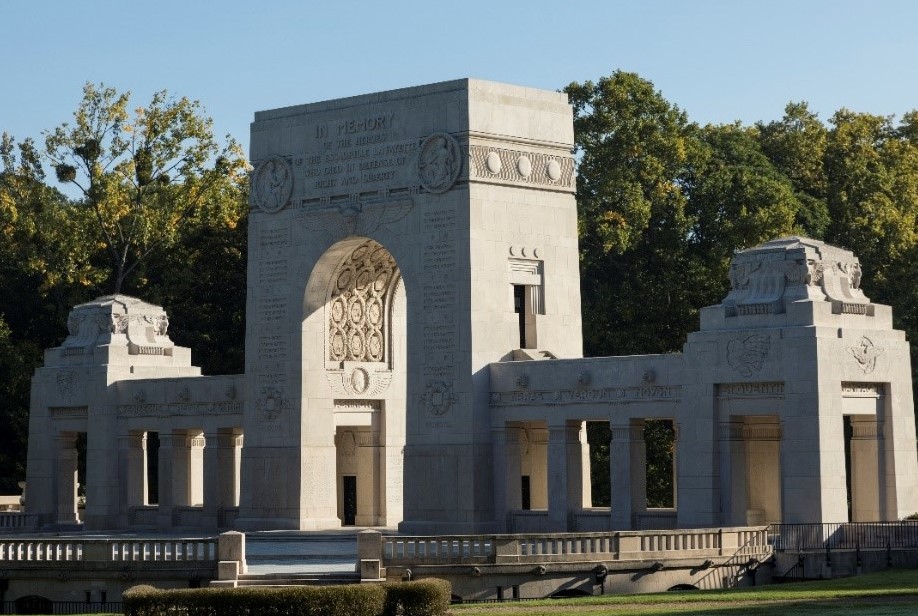
The pilots were volunteers and inexperienced.
This site honors the American volunteer pilots who flew with French squadrons during the Great War, and is the final resting place for some of America’s first combat aviators and their French officers. These young men gave their lives in the name of freedom, without being called to do so. Their belief in the importance of the Allied cause, and a desire for adventure and glory led them to France. Some of them decided to interrupt their prestigious studies at Harvard University or Princeton University that promised them bright futures to serve an ideal. Many of them first served in the French Foreign Legion and fought in the trenches as soldiers or saved lives as ambulance drivers for the American Red Cross. Later, after demonstrating their dedication, they joined French air force schools and learned to fly airplanes via a rather rapid training course lasting just a few months. Once they obtained their licenses, American volunteers were assigned to the Lafayette Escadrille or other French squadrons where they demonstrated their courage, bravery and heroism.
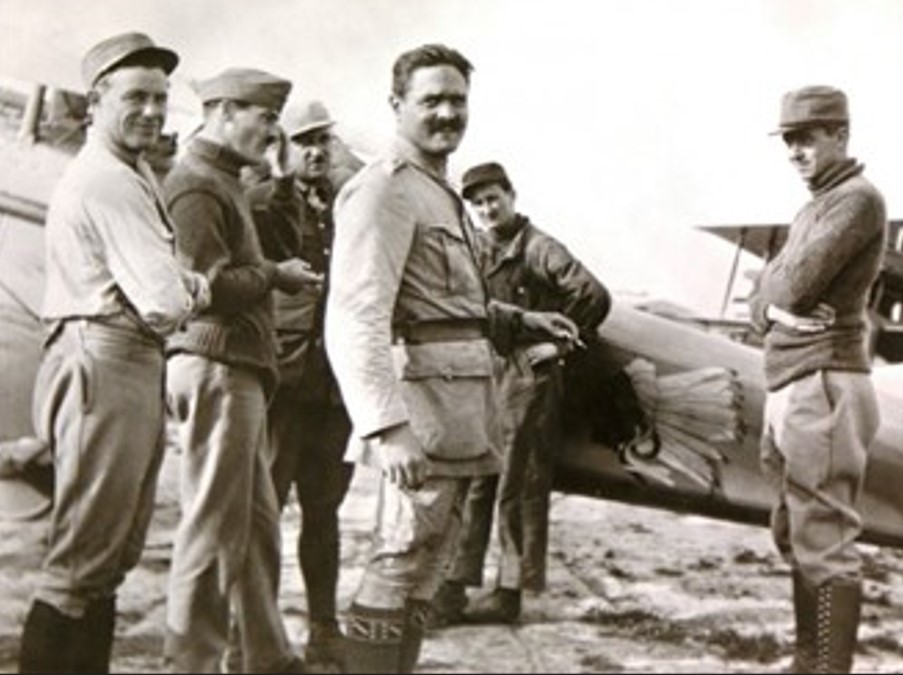
America in the eyes of French people in the early 20th century
Lafayette Escadrille’s emblem features a Native American. To understand the meaning behind it, we need to go back to the context of World War I. Georges Thenault, the French squadron leader, was searching for a symbol that would perfectly depict the uniqueness of his team. While sitting down in front of an ammunition box with a Seminole head represented on the top, he had the idea for their emblem. He also remembered that one of his men, Sgt. Harold Willis, had art skills. He asked him if he could give the Seminole head more masculine features, a Native American. Raoul Lufbery added the swastika, which was a symbol of good luck at the time and heavily used in Native American iconography as a symbol of masculinity, bravery, and independence – common in the tribes of the Southwest, especially the Navajo. While the exact origins of the symbol are disputed, according to some sources, the Native American head was also present on the ammunition box from the company Savage Arms, which has a very similar head as its logo to this day. They thought this was a uniquely American image.
When celebrating the 100th anniversary of the squadron April 20, 2016, Oglala Lakota Sioux Tribal Chairman, John Yellow Bird Steele came and gave a speech in recognition to this key symbol.
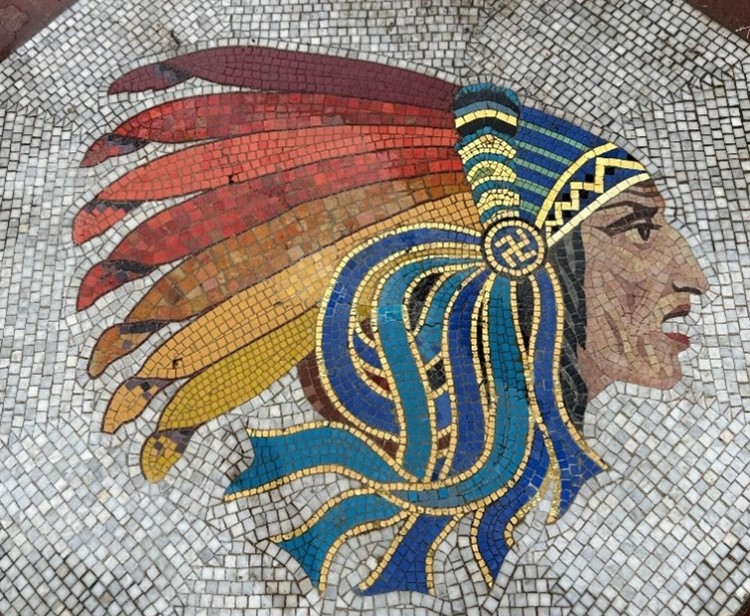
The squadron had lion cubs as mascots
Back in summer 1916, William Thaw, one of the founders of the Lafayette Escadrille, read in a newspaper that a dentist was selling his lion cub. Interested in it and searching for a mascot, Thaw decided to buy it. The lion cub would then become Whisky. But why this name? While drinking whisky one day, Thaw noticed the lion was looking at him and seemed attracted to the beverage, thus they named him, Whisky. A bit later, a lioness named Soda joined the team.

Remembering the friendship between the French-speaking world and the United States
The Lafayette Escadrille Memorial Cemetery commemorates Americans for the most part but also pays tribute to one Canadian, Alfred Pelton, from Montreal, and two French officers who commanded the squadron, Georges Thenault and Antonin Brocard. It happened because the memorial was not built by ABMC but by the pilots’ families and a French American association, which later transformed into the Lafayette Escadrille Memorial Foundation.
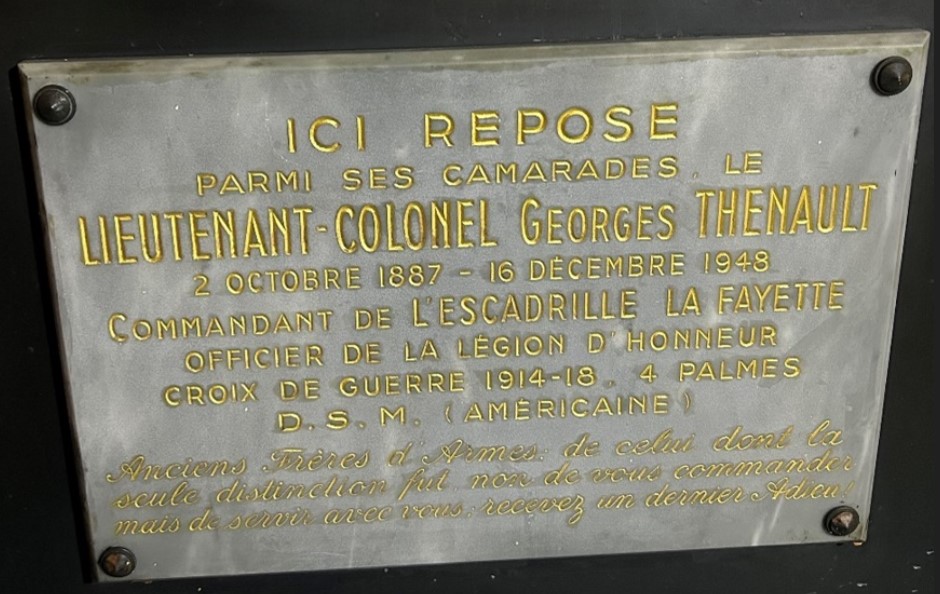
Transposing the story of the Lafayette Escadrille on screen
The impressive replica plane, a Nieuport 17, that catches the eye of every visitor in the Lafayette Escadrille Memorial Cemetery Visitor Center is linked to the 2006 movie, “Flyboys” starring James Franco and Jean Reno as it was made by the same company that did the replicas for the movie. The movie tells the history of fictionalized American volunteers in a highly romanticized way. The other half of the propeller of the plane displayed in the visitor center is in the ABMC Paris office.
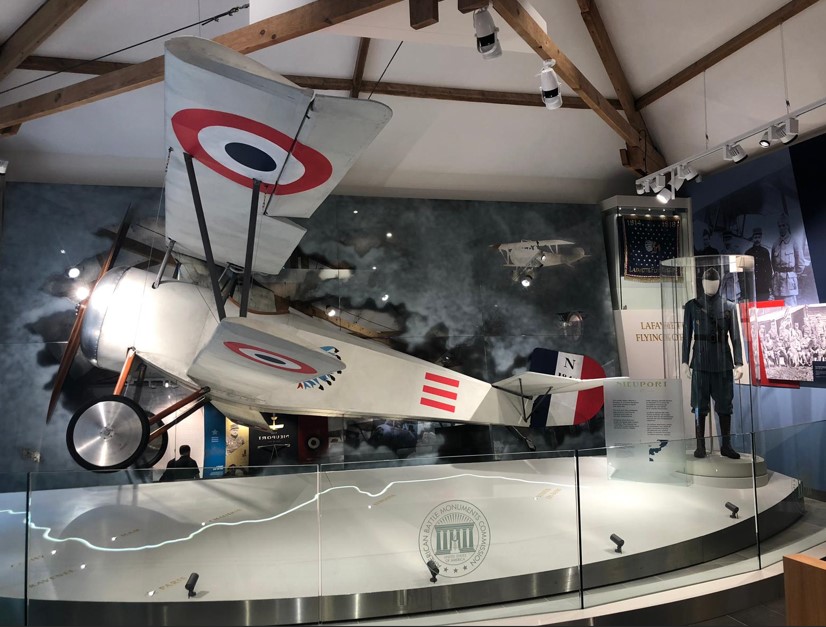
Sources:
LEMC Team
ABMC Documents and Services
Historical Services
Website & brochures
Les clés du Mémorial de l’Escadrille Lafayette, Jean-Claude Lemaire
The story of the Lafayette Escadrille, George Thenault
The Lafayette Flying Corps, Dennis Gordon
 An official website of the United States government. Here's how you know.
An official website of the United States government. Here's how you know. 